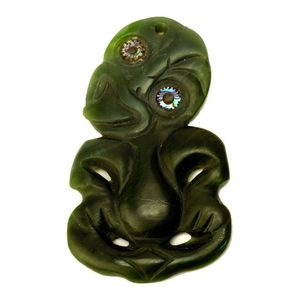Art Nouveau Diamond Pendant by Janvier
You must be a subscriber, and be logged in to view price and dealer details.
Subscribe Now to view actual auction price for this item
When you subscribe, you have the option of setting the currency in which to display prices to $Au, $US, $NZ or Stg.
- Art Nouveau Period - The Art Nouveau period was a cultural movement that emerged in the late 19th century, and was characterized by its emphasis on natural forms, flowing lines, and a decorative, ornamental style. Art Nouveau was a reaction against the ornate and heavily stylized designs of the previous era, and sought to create a new, more organic aesthetic.
Art Nouveau was characterized by its use of sinuous, curving lines, as well as a focus on natural elements such as flowers, vines, and other organic shapes. Art Nouveau designers sought to create a total work of art, in which every element of a building or object was designed to be harmonious with the overall design.
Some of the most iconic examples of Art Nouveau design include the Paris Metro entrances designed by Hector Guimard, the works of the artist Alphonse Mucha, and the architecture of Victor Horta in Brussels.
The Art Nouveau period was at its peak between 1890 and 1910, but began to decline in popularity by the start of World War I. However, Art Nouveau remains an important influence on design and art to this day, and continues to be celebrated for its emphasis on natural forms and decorative style. - Rose Cut - A flat based cut for a preious stone, leaving the surface covered with triangular facets, usually 24 in total.
It was introduced in the 15th century and popular during the 16th and 17th centuries.
The rose cut was the most popular form of diamond cut until the discovery of the brilliant cut at the end of the 17th century, after which its use declined.
This item has been included into following indexes:
Visually similar items

A Japanese ivory netsuke of a standing figure holding a bowl, two daruma one sleeping the other seated, unsigned. Provenance: Adelaide collector. Height 4 cm

A Meiji Japanese carved ivory netsuke, the two seated figures decorating a large Daruma doll, fine detail, character marks to base.

Hei tiki pounamu in orthodox stance, with head tilting to the left. Pierced, hourglass-shaped suspension hole for muka cord which is worn out. Both eyes well defined as are elbows which extend arms to rest on legs. Nephrite. Length 6 cm. Width 3.6 cm

A 20th century Maori greenstone hei tiki, of good proportion and style, tongue extended, chin to right shoulder, hands clasped to thighs, serrated paua shell inset ring eyes, mildly counter sunk, suspension hole to top of head, good even dark green tone. 1
